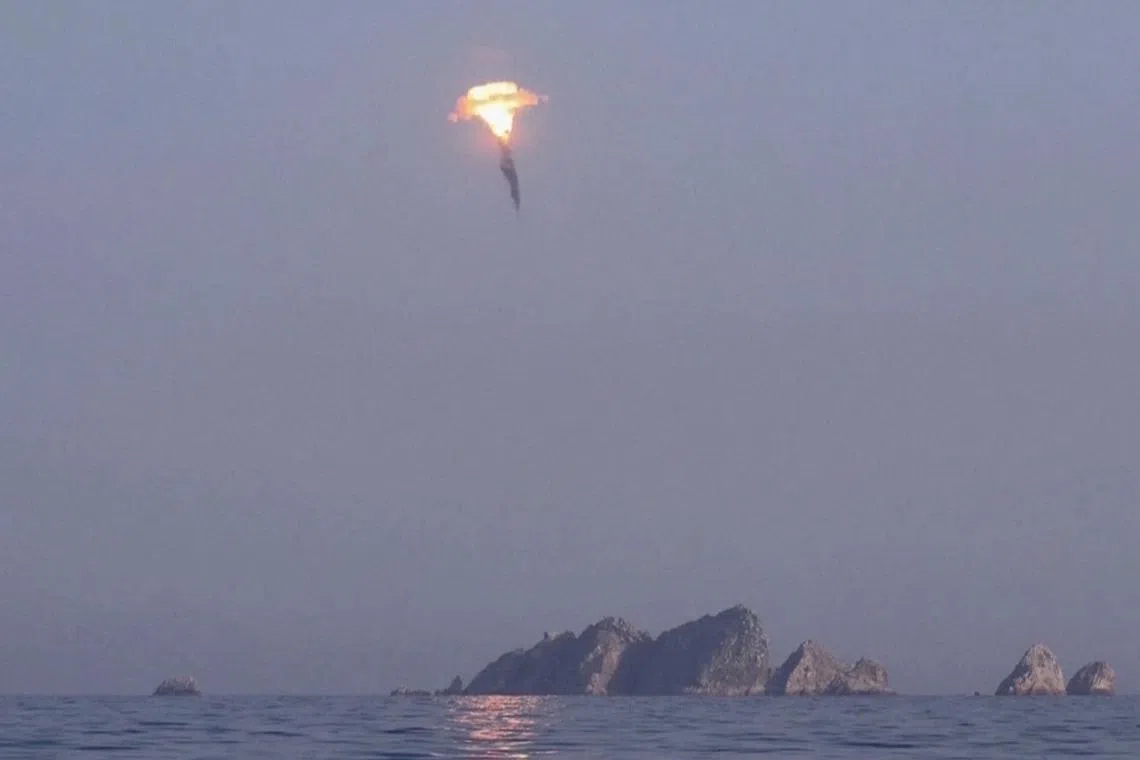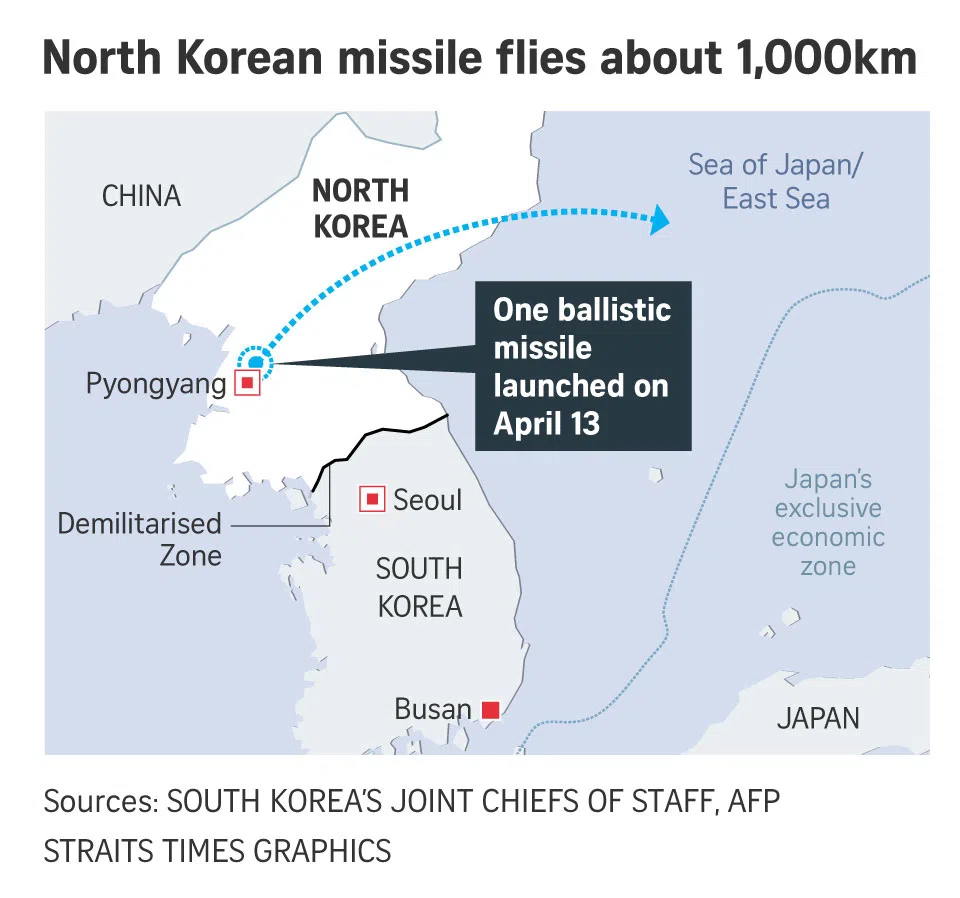North Korea launches new type of ballistic missile, South Korea says
Sign up now: Get insights on Asia's fast-moving developments

A screen grab from a video shows an undated image released by KCNA of a ballistic missile test at an undisclosed location.
PHOTO: REUTERS
Follow topic:
SEOUL - North Korea fired a new model of long-range ballistic missile on Thursday, South Korea and Japan said, triggering a scare in northern Japan where residents were told to take cover, though there turned out to be no danger.
The missile flew about 1,000km, South Korea’s military said, calling it a “grave provocation”.
The apogee, or maximum altitude of the missile, has not been disclosed, though South Korea’s Yonhap news agency said it appeared to have been less than 3,000km – far below the height of some tests in 2022 which topped 6,000km.
The South Korean military said it was on high alert and coordinating closely with its main ally, the United States, which “strongly condemned” what the White House said in a statement was a long-range ballistic missile test.
A South Korean military official said the test launch apparently involved a new weapons system shown at recent North Korean military parades.
The military was analysing the projectile’s trajectory, and the defence ministry said it could have been a solid-fuel missile.
North Korea has been working to build more solid-fuel missiles, which are easier to store and transport, and can be launched with almost no warning or preparation time.
While North Korea has tested short-range solid-fuel missiles, it has not tested a long-range missile of that type, said Mr Bruce Bennett, a senior defence analyst at the US-based Rand Corporation.
The missile was fired at 7.23am (6.23am Singapore time) from near Pyongyang, South Korea’s Joint Chiefs of Staff said. This means that it could have been launched from an international airport close to the capital, a major site for test-firing large missiles since 2017.
Mr Kim Dong-yup, a former South Korean navy officer who teaches at Kyungnam University’s Far East Institute, said the missile might have been an intercontinental ballistic missile that was unveiled at a February military parade, and powered by a solid-fuel engine tested in December.
The nuclear envoys of allies South Korea, the US and Japan condemned the launch, saying North Korea had constantly threatened regional peace with “unprecedented levels of provocations and menacing words”, South Korea’s foreign ministry said.
Japan called for a National Security Council meeting in response to the launch. Defence Minister Yasukazu Hamada said the missile appeared to have been fired eastward at a high angle, and it did not fall in Japanese territory.
Japan’s coast guard said the projectile had fallen into the sea to the east of North Korea. Mr Hamada could not confirm whether the missile flew over Japan’s exclusive economic zone.
Japanese authorities retracted the take-cover alert for Hokkaido island when they determined that the missile would not fall nearby.
Schools in Hokkaido delayed their opening times and some train services were suspended, Japanese broadcaster NHK reported.
A student told NHK that the alert caused momentary alarm at a train station. “For a second in the train there was panic, but a station worker said to calm down, and people did,” he said.

Following the missile launch, the Japanese and US air forces conducted joint drills over the Sea of Japan, the Japanese defence ministry said.
“Japan’s Self-Defence Forces and the US military conducted the joint training drill as the security environment surrounding Japan is becoming more and more severe, with North Korea launching ballistic missiles that could be ICBM-class ballistic missiles from a high angle,” the ministry said in a statement.
North Korea’s missile launch came days after North Korean state media KCNA reported that leader Kim Jong Un called for the strengthening of the country’s war deterrence
While condemning the latest in a string of North Korean missile tests, the US renewed its offer to open talks.
“The door has not closed on diplomacy, but Pyongyang must immediately cease its destabilising actions and instead choose diplomatic engagement,” US National Security Council spokesman Adrienne Watson said.
North Korea has criticised the recent series of joint military exercises

